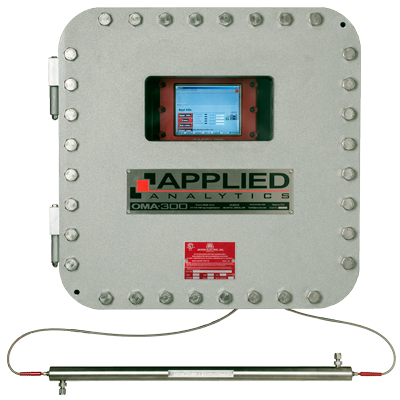
Application Summary
- Analyte: tert-butyl catechol (TBC)
- Detector: OMA-300 Process Analyzer
- Process Stream: Butadeine
- Zero Fluid: Pure isopropanol
- Typical Measurement Range: 0-200 ppm
Introduction
Polymerization inhibitors are chemicals which stabilize reactive monomers and prevent spontaneous polymerization. If too little inhibitor is added to a reactive monomer, polymerization can occur in pipes or vessels and require mechanical removal. On the other hand, if too much inhibtor is added, the final product may have difficulty polymerizing at the intended stage.
Monitoring tert-Butyl Catechol (TBC) in Butadeine
TBC is usually added as a polymerization inhibitor to monomers like butadiene and styrene. The concentration of TBC in the monomer needs to be regulated at approximately 100 ppm to avoid spontaneous polymerization as well as waste.
TBC has a distinct UV absorbance curve which allows the OMA system to easily monitor its real-time concentration. The full-spectrum analysis is critical for differentiating TBC absorbance from other absorbing impurities like toluene.
Since pure liquid butadeine is very difficult to prepare for system blanking purposes (i.e. at normal temperatures and pressures), pure isopropanol is used to zero the instrument. The full-spectrum analysis allows for normalization of the discrepancy between the butadeine spectrum and the isopropanol spectrum.
The OMA continuously outputs the TBC reading to the plant’s main computer, providing new measurements at a 1 second interval — much faster than the traditional HPLC used for this application (15 minute interval). Response time is critical in order to respond quickly to sudden changes in TBC concentration.
Documentation
 Measuring TBC (Polymerazation inhibitor)
Measuring TBC (Polymerazation inhibitor)